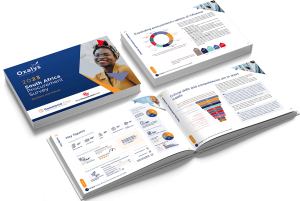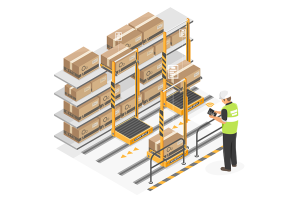 With cost pressures likely to mount up as we recover from COVID-19, mining and manufacturing companies must find alternative methods to reduce total cost of ownership relating to product procurement and product consumption.
With cost pressures likely to mount up as we recover from COVID-19, mining and manufacturing companies must find alternative methods to reduce total cost of ownership relating to product procurement and product consumption.
“A product information management (PIM) system can help”, says Isak Marais, CEO, DigiTeams, which specialises in bespoke digital transformation within the mining, manufacturing, wholesale and retail sectors.
Most mining and manufacturing companies procure a large quantity of products to support their operations. In larger companies, this can mean purchases of more than 400 000 different products each year. The focus is on cost savings, concentrating on the products/solutions that contribute to the highest spend or the largest product volumes used. Procurement contracts or tenders form part of the procurement strategy to manage costs and guarantee supply. Furthermore, they place the products into segmented categories, such as bearings, lubrication, mechanical, electrical or personal protective equipment (PPE).
This complex system is, normally, controlled by means of an enterprise resource planning (ERP) system, where various departments, such as engineering, production, procurement, finance or warehousing, all draw their required product information data. However, not all product information is necessarily stored in one database or even linked to databases.
ERP systems are, normally, set up based on company history and change as the business evolves. This evolution means that product standards are individualised per company. There is thus not an agreed universal standard taxonomy of product classification. The United Nations Standard Products and Services Code (UNSPSC) (product segment, family, class, commodity) or the Electro-Technical Information Model (ETIM) (product group, class, synonym keywords, features, values, units), are two of the many classification systems.
Owing to the non-standard classification, ‘dirty’ data is a problem, e.g. duplication, wrong classification or other input errors. Maintaining such data is also costly and time-consuming, owing to the system being ‘closed’ and maintained by a small dedicated team. The system is inaccessible to suppliers/manufacturers of those products to correct or enrich the data.
With the emergence of the Fourth Industrial Revolution, product data and information have the potential to become so much richer. This has led to the rise of digital asset management systems where product photos, PDFs and videos can be stored.
However, despite this, there remains no or little linking of product information with ERP systems.
This is where a PIM system can be introduced as a solution. It is a centralised repository where all product information is housed. It provides controlled access to the various departments within a company, and suppliers can update and extract information based on their level of access.
PIM systems recognise product data from numerous different sources:
– Essential product data: stock-keeping units (SKUs), universal product codes (UPCs), names, titles, descriptions, etc.
– Taxonomy and relationships: categories, labels, variations, etc.
– Technical specifications: measurements, materials, ingredients, warranties, etc.
– Digital assets: images, videos, documents, etc.
– Design specifications: style sheets, designer notes, assembly instructions, etc.
– Supplier and manufacturer data: spreadsheets, certifications, etc.
PIM product data is created by an internal organisation and external suppliers to support a multi-channel procurement strategy. The graphic below represents what happens within a PIM system and shows the benefits of such a system:

In closing, a further benefit of a PIM system is that it is an information source for distribution channels. As a source, a PIM system is a product catalogue that synchronises data inputs into distribution channels, like the ones below, enabling them to function optimally:
– Financial (ERPs)
– Buying (procurement management systems)
– Controlling (warehouse issuing and management systems)
– Managing (computerised maintenance management systems)
– Producing (product tender documentation management systems)
Isak Marais is the CEO of DigiTeams, a company that specialises in bespoke digital transformation within the mining, manufacturing, wholesale and retail sectors. The dedicated team focusses on e-catalogue and PIM consulting, implementation, maintenance and custom development. Contact Isak on +27 (0) 72 494 7456 or isak@digiteams-sa.com


























